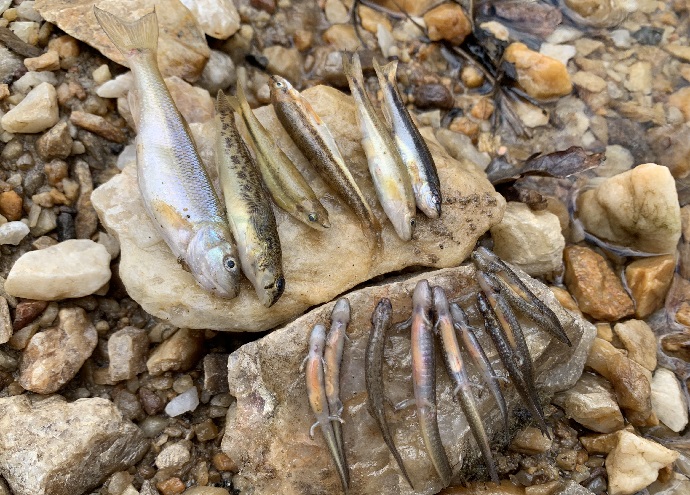
|
Slaughter of the Salamanders
|
|
Fish Kill on Long Branch central! 
Species documented are Black nose dace, Tessellated darter, Creek chub, and Two-lined salamander. No doubt many other small aquatic creatures perished hidden among the rocks. March 23, 2022 - An alert neighbor witnessed dozens of dead fish in the Long Branch central tributary of Accotink Creek just behind Olde Creek Elementary School. The incident was reported to Virginia Department of Environmental Quality, but with inconclusive findings. Followup two days later by Friends of Accotink Creek and Friends of Long Branch Stream Valley added dozens of dead salamanders to the toll, as well as fish alive, but struggling to stay upright. We found no obvious cause, such as chemical odors, discoloration or oil sheens in the water, or unusual staining at outfalls or drains. We did document at least some seemingly healthy survivors, so we hope the cause is not ongoing. DEQ investigators speculated that nearby construction sediment runoff may have been the cause, but this is dubious. Precipitation seems insufficient to have caused significant sediment runoff. Also, we have seen many (far too many) previous construction sediment spills in our watershed that have not caused acute die offs like this. We might have wished the DEQ investigators had shown such concern for the effect of sediment spills on aquatic wildlife when we were reporting incident after incident on the I-66 Outside the Beltway project. Other possible causes we considered:
Even in cases where clear evidence of improper activity causing stream contamination is found, we are usually disappointed to find that the only consequence is an instruction to stop, without penalty or responsibility for remediation of harm.
DEQ Incident Report #303847
Long Branch is to be the subject of a series of major restoration projects along its length. We hope this incident may prompt more interest in the Long Branch Central Project. |
